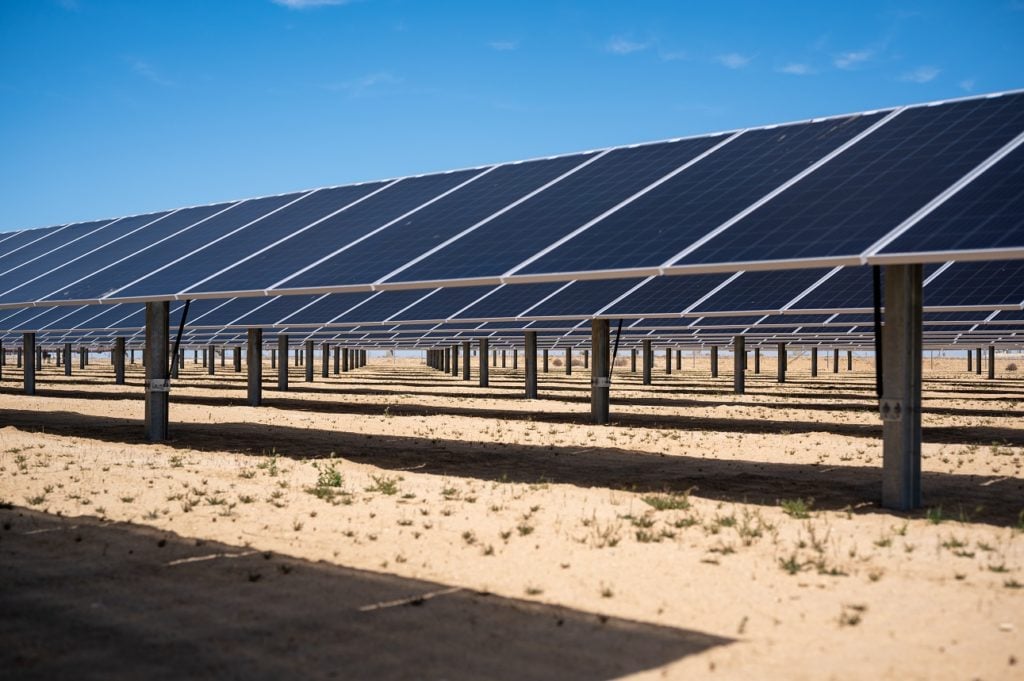
Last week’s collapse of Silicon Valley Bank (SVB) has raised questions about capital financing for the renewables industry, with the entity having financed up to 62% of the US community solar market.
Major actors in the solar sector such as developers Sunrun, AES Corporation, Distributed Solar Development, Cypress Creek Renewables and others had received financing from SVB in the past, as covered in PV Tech.
By the end of 2021, the bank had committed more than US$3.2 billion in project finance innovation – which includes the cleantech industry – according to SVB’s data.
Silicon Valley Bank went into receivership last week after customers withdrew deposits en-masse leaving it with a negative cash balance.
The Federal Deposit Insurance Corporation (FDIC) quickly stepped in and transferred all deposits and all assets to a new ‘bridge bank’ entity – Silicon Valley Bridge Bank – allowing customers’ business to continue uninterrupted.
But the collapse has raised questions for the circa 1,500 clean energy companies it has worked with, and the plethora of renewable energy and energy storage projects it has financed including some 62% of all community solar in the US by the end of March 2022. While the FDIC’s move appears to prevent any short-term fallout, the long-term effect on the availability of capital, specifically tax equity, has divided opinion.
Bloomberg reported yesterday (14 March) that some community solar projects may be delayed because of the need to find new sources of financing.
Sunrun
US residential solar and storage systems installer Sunrun had exposure to Silicon Valley Bank totalling nearly 15% of its hedging facilities, nearly US$80 million in cash deposits, and the bank still had a US$40 million undrawn portion of a large debt facility.
In addition to a statement issued on 10 March, Sunrun CEO Mary Powell provided PV Tech with the following comments after the FDIC’s Bridge Bank was announced:
“We are pleased that the federal government acted Sunday to stabilise the banking system, ensuring us access to the less than US$80 million we had in deposits at SVB. Sunrun has long-standing banking relationships with a large number of financial institutions, and we remain confident in our ability to replace SVB’s undrawn commitments. Sunrun has always believed in strength through diversification.”
Developers and project financing: Leeward, Cypress Creek, AES Corporation and others
The bank was also active in providing financing for many large-scale solar and storage projects across the US. In the past year, Solar Media reported on the following deals it participated in:
Cypress Creek told PV Tech: “Cypress Creek is aware of the recent failures of Silicon Valley Bank and Signature Bank (another collapsed bank). We do not expect these incidents to have a material impact on our business operations but we are continuing to monitor the situation closely.”
Further back, it was involved in financing deals for Plus Power’s 565MWh Kapolei project in Hawaii, AES Corporation subsidiary sPower, AES Corporation directly for a community solar portfolio, and deals with Distributed Solar Development (DSD) and Vivint Solar back in 2019.
Future of Silicon Valley Bank
At its peak, Silicon Valley Bank had a market capitalisation of US$44 billion and total assets of US$212 million, making it the 16th-largest commercial bank in the US. The bank may still come out of this intact, with various venture capital firms reportedly mulling a takeover and re-organisation.
The newly-appointed CEO of the Bridge Bank entity Tim Mayapoulos issued a statement yesterday (14 March), via Silicon Valley Bank’s website, calling on those who withdrew funds to transfer them back to the bridge bank and “support the future of this institution”. HSBC has stepped in and acquired its much smaller UK arm.
For more on this story and how the energy storage industry has been affected by the collapse of SVB, visit sister site Energy-Storage.news.
Read all PV Tech coverage of solar PV financing deals involving Silicon Valley Bank here.
PV Tech publisher Solar Media will be organising the second edition of Large Scale Solar USA Summit in Austin, Texas during 3-4 May. With the Inflation Reduction Act (IRA) targeting US$369 billion for clean energy and US$40 billion for manufacturing, the solar industry has never been brighter. The IRA, securing financing for future projects or supply chain bottlenecks will be among the discussions at this year’s event. More information, including how to attend, can be read here.




